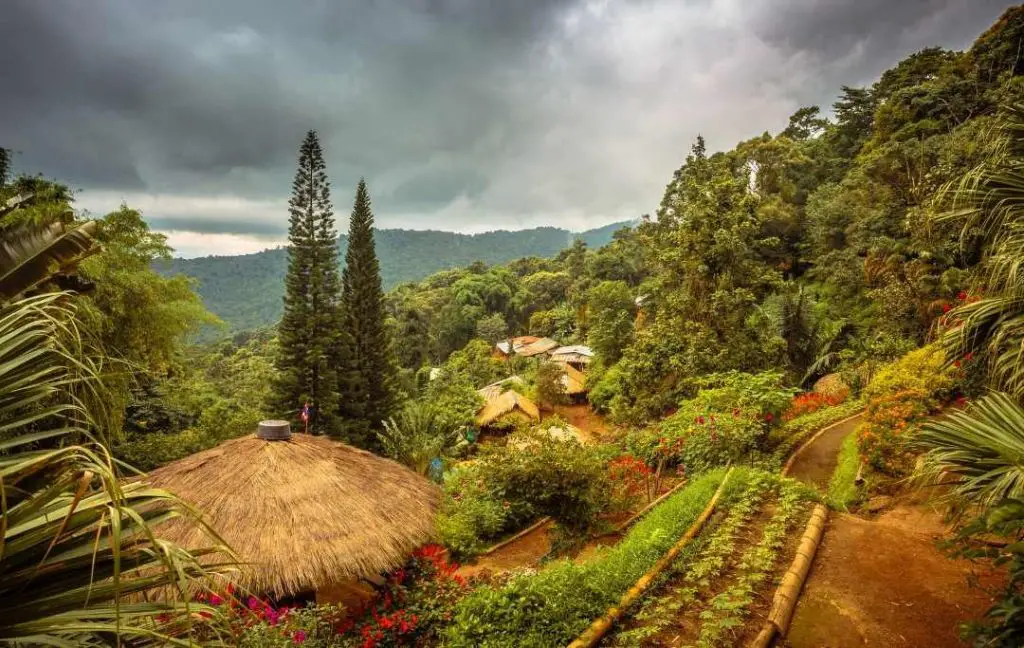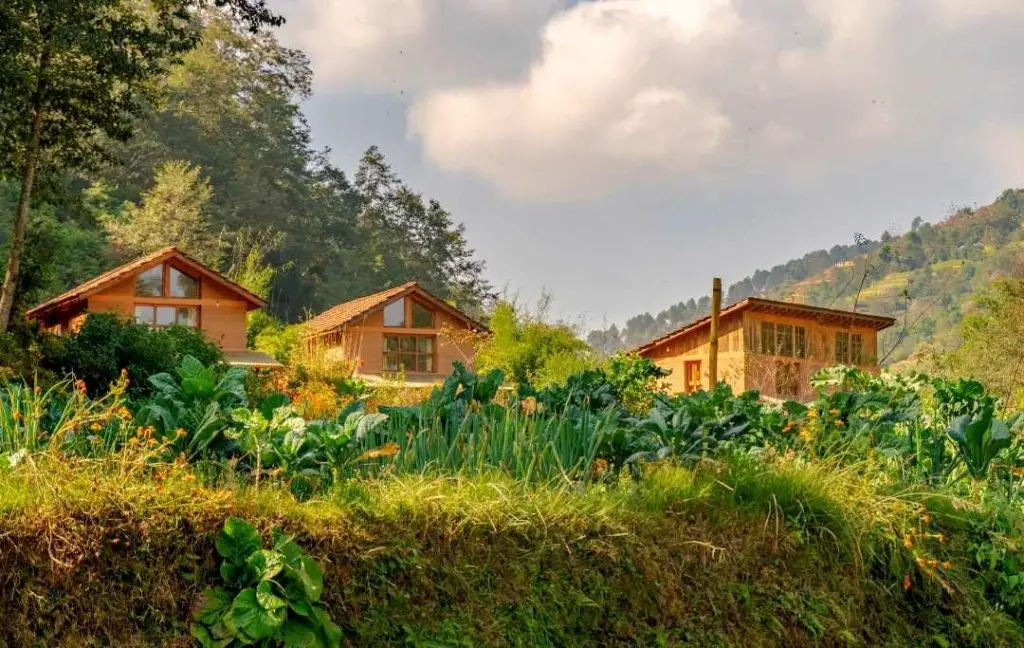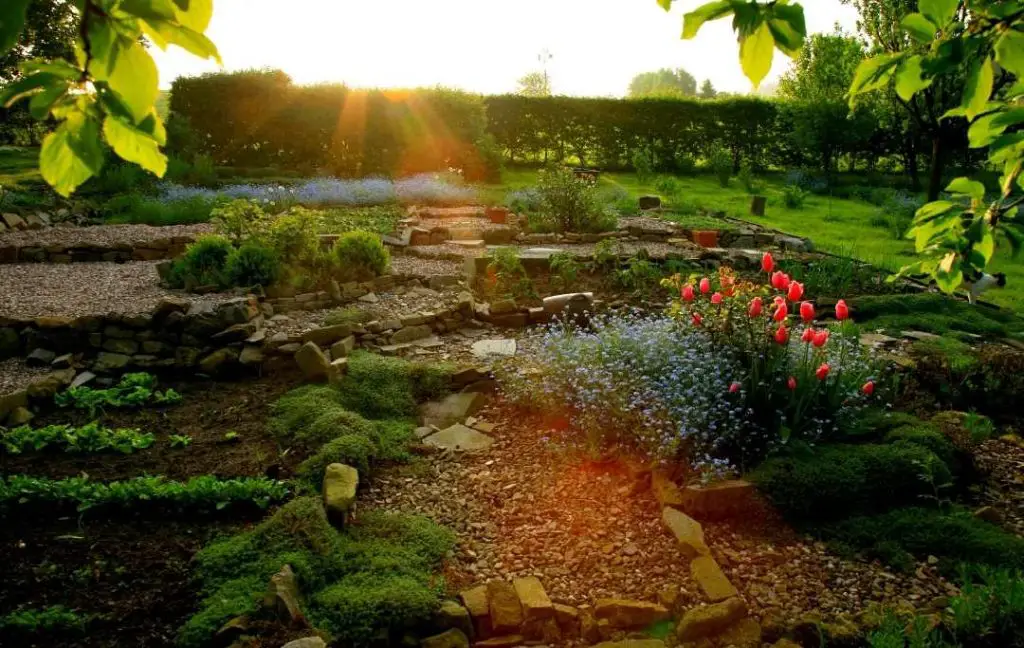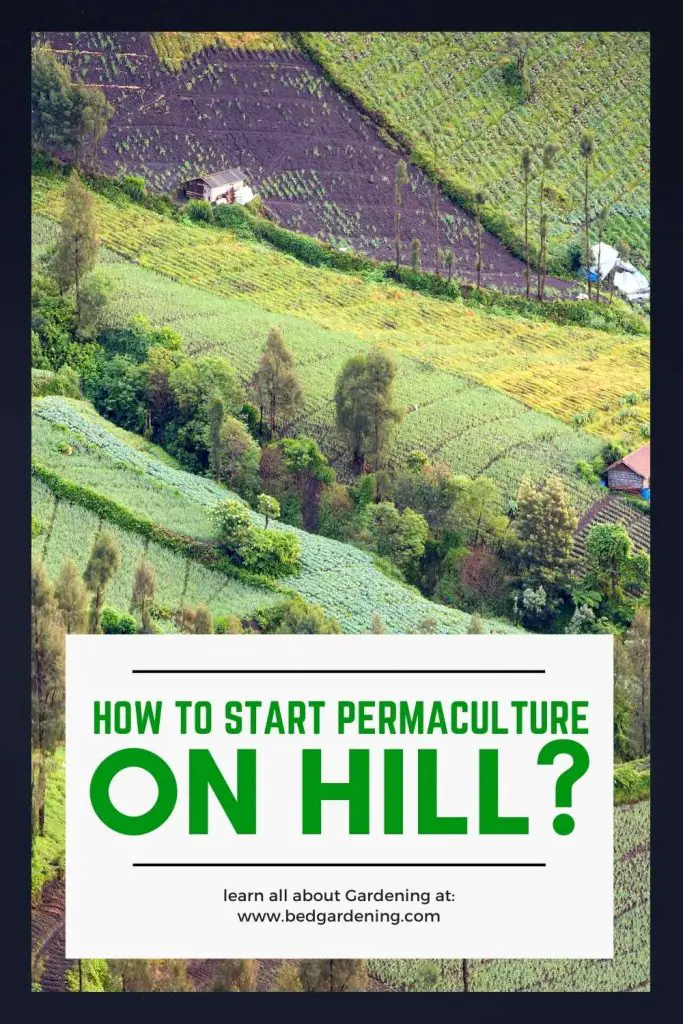Most people want to live with nature and they love to enjoy the greenery around them. For such people, permaculture techniques will work great but first, you should understand what is permaculture?
What Is Permaculture?

Permaculture is a set of design principles. As you want to grow a permaculture garden on the hill, you should make a clear sketch of your landscape. If you follow the principles of permaculture then you are automatically creating a permaculture garden.
At the outset, you should do the following things:
- Measure the size of the garden so this will help to know the scale of the project.
- Your decision on how much permaculture you want to incorporate into the design is very important. For a traditional vegetable garden, you can get help with a few permaculture design features.
Principles Of Permaculture, Emulating Nature
There are many principles of permaculture but now it’s up to you which design or principles you want to follow to start your permaculture garden.
Soil Preservation
Soil protection or preservation is very important. The following are the ways to protect your soil according to permaculture principles.
- Mulching and ground cover plants help to retain the moisture in the soil. It is also an important way to get rid of weeds. Weeds are unwanted plants that can steal nutrients from the soil and as a result, competition will start between the plants and weeds.
- No-dig gardening is another way to preserve the soil. Digging can destroy the structure of the soil. Bacterial life in the soil helps to make the soil rich for your plants. Digging can kill them so you should avoid them if you want to create a permaculture garden.
- An important thing to prevent your soil from disturbance is to make raised beds of such size to easily access your plants. If you build large raised beds, you have to step into the garden bed’s soil, which will destroy the soil life. Your soil becomes compact and it will not get proper air. In compact soil, water penetration is a big problem. As a result, the roots of the plant will not get an appropriate amount of water for growth and productivity.
Plant Staking
When plants grow naturally then they get support from tall trees. The trees form a canopy for the shrubs below. Then you can grow herbaceous plants and below them, there are ground cover plants at the lowest level.
The deep-rooted crop grows beneath the ground. You can grow vines vertically in the background of this landscape. You have to grow plants in the same way. But you should keep in mind that stake your plants in time.
Vertical Gardening
Vertical gardening is best for those plants which can grow on the ground. Vertical surfaces are best for such plants.
- Some plants such as Kiwi fruit and grapes can grow on trellises and fences.
- Watermelons, pumpkin, zucchini, gourds, and rockmelon need support to grow.
Water Gardens
Aquatic ecosystems are very productive and can be used to grow edible plants. These plants are water chestnuts, lotus, Sagittaria, mint, and others.
You can use a pond for water collection. Use a filter system to clean the water. You can also keep fish, frogs, and even ducks in the ponds.
Mono-cultures, Poly-cultures, And Companion Plants
- If you don’t want to use companion planting for plant stacking then monocultures can help you to make your plants more accessible to pests.
- Companion planting is a perfect way to stimulate plant growth and productivity. Companion planting helps to hide the plants from pests and attract beneficial insects like bees for pollination.
Permaculture On Hill

If you live in a hilly area and want to grow plants in your sloppy area, you should follow the rules of permaculture. You should consider the actual characteristics of your site or area.
The characteristics include a slope, elevation, orientation and aspect. You should very smartly think about how you can use all the characteristics to create a perfect small farm or backyard for sustainable living.
Slope
Growing plants on a slope are not easy because it offers all sorts of potential for harnessing its energy. If you are interested in gardening, you should not lose your heart because with little effort and after following some rules, you can succeed in creating your growing area on a hill.
Before you start planting, you have to think about many factors.
1- Understanding Of Your Local Climate
The most important permaculture factor is climate and it is fundamental before starting growing on making your vegetable garden on a slope.
Temperature, rainfall, humidity, wind, and the insolation are associated with climate and are very important for the growth of any plant.
Geographical concerns, shape, and form of land are very important for any land. These are parameters on which you have to work;
- Gather the geographical information
- Observe
- Study the influence on your farm
2- Develop Water Supply
Rainfall is very important because it will determine the development of your hill area where you want to grow plants. The distribution of water is the foundation upon which you will build your growing area on a hill.
The water flows naturally from high elevation points of the hill to low. You don’t need any additional energy inputs. The water on the hillside runs down very fast so it is best to stabilize the slope of the hill with reinforced beds that run easily.
You have to store water resources on the hill to let water gravity feed your plants. When you are developing your water system you have to think about storage harvesting and regulation of water.
- Water Storage
First, you should consider the need for water, then work out how much water you want to store. You should arrange your ponds and tanks high in the landscape of the hillside area.
In this way, you can use water for irrigation purposes whenever it is needed. Another important point is that plastic pipes are very effective for the delivery of water.
- Water Harvesting
After arranging your water storage for your plants, the next step is to develop and expand upon the methods of harvesting the water. The best way of capturing water is with a water harvesting drain that will divert the runoff to your ponds or tanks and can also help in the overflow of water into your ponds.
- Reticulation Of Water
Keyline cultivation is the best pattern to slow, spread and sink the rain across the landscape. This is an artificial water line that captures water and slowly infiltrates and hydrates the landscape.
Read More
- HOW TO START A NO-DIG GARDEN?
- 10 Best Permaculture Garden Designs
- Permaculture Garden Techniques Every Beginner Should Know
3- Raised Beds For A Sloping Garden

If you are planning to create a sloping garden then raised beds are the best option for this purpose. Growing a slope Garden is making raised beds on a slope.
At some places you have to only use a low stone wall to transform that area, on the other hand, some sites may require compact beds stacked up like boxes. You can build the frame by using different materials. The following materials you can use for making beds.
Natural Stone
This is a natural and cheap way of making the bed. In a mountainous area, you will find natural stones free. The combination of plants and stones looks great. For hillside beds of less than 18 inches, you can use this option.
Retaining Wall Blocks
You can use concrete blocks for making raised beds in the sloppy area. The interesting thing is that concrete blocks are very cheap and easy to handle. You can create retaining walls with the help of blocks.
Logs And Untreated Boards
You can use locks and untreated boards for making raised beds. but when the wood decays then mycelium from the wood-feeding fungi also enters the soil.
This is called the hugelkulture effect because you bury the logs and wood beneath the hill garden. With time, the wood will decompose and your plants get all the benefits from the soil.
Steel Panels
Due to durability, steel panels have become very trendy. You should choose that material for raised beds which will not destroy your plants. Some materials such as treated lumber for landscape timbers have chemicals that can affect your plants.

4- Wind And Slope
The speed of the wind is very high when it flows up. On the other hand, when the wind travels down then it will slow.
5- Improve The Soil
Soil is very important in a growing area. When you are developing a permaculture garden on a hill then you should improve the fertility of the soil. To get maximum benefits when you grow plants.
You can use simple techniques to improve the quality of the soil. Cover cropping mulching and erosion control are simple ways to increase the growing power of the soil. You can also use biofertilizers and compose tees for this purpose. It can improve the growth of your plants.
If you want to grow healthy plants in the soil then your soil should not be compacted and it has water, living biology, minerals and air.
6- Plant Trees And Crops
Your soil and water supply are ready now you can easily plant in your hilly area. You can also establish windbreaks for the production of your plants. You can plant trees, woody crops, annual and perennial plants.
You can also grow a vegetable garden in your slopey area. This point should be noted that the top portion of the hillside is not a warmer area and it is drier than the bottom.
When you are selecting the place for your vegetables then you should keep in mind these things. For example, moisture-loving plants grow best near the bottom of the slope.
